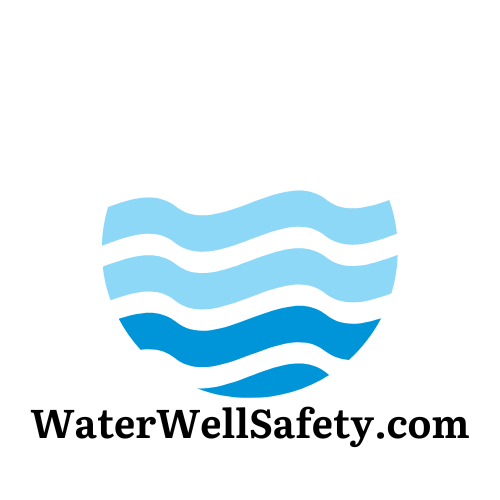5 Common Water Well Risks in Oklahoma and How to Avoid Them
Oklahoma’s water wells are a lifeline for thousands of homeowners, contractors, and municipalities, providing clean water for drinking, farming, and daily use. However, the state’s unique geology, climate, and industrial activity create specific risks that can compromise well safety and water quality. At WaterWellSafety.com, we specialize in protecting Oklahoma’s wells through expert hazard analysis, water testing, and our exclusive WaterQuality Assured certification. In this post, we’ll explore five common water well risks in Oklahoma and share practical steps to avoid them, ensuring your well remains safe and compliant with OWRB and DEQ standards.
1. Nitrate Contamination from Agricultural Runoff
The Risk: Oklahoma’s rich agricultural landscape, particularly in areas like the Ogallala Aquifer region, makes nitrate contamination a significant concern. Nitrates from fertilizers and livestock waste can seep into groundwater, posing health risks, especially for infants (e.g., blue baby syndrome). The DEQ reports that nitrate levels above 10 mg/L are unsafe for drinking water.
How to Avoid It:
Test Regularly: Schedule annual water quality tests to monitor nitrate levels. Our Water Sampling Consultation provides professional testing and actionable recommendations.
Install Treatment Systems: Use reverse osmosis or ion exchange systems to remove nitrates, tailored to your well’s needs.
Maintain Setbacks: Ensure your well is at least 100 feet from agricultural fields or livestock pens, per OWRB guidelines.
Action: Book a Water Sampling Consultation to check for nitrates and other contaminants. Our experts will guide you through safe, effective solutions.
2. Bacterial Contamination from Poor Well Sealing
The Risk: Improperly sealed wells or aging casings can allow bacteria (e.g., E. coli, coliform) to enter from surface water, especially after heavy rains or flooding in Oklahoma’s variable climate. The DEQ notes that 20% of private wells in the state test positive for bacteria annually.
How to Avoid It:
Inspect Well Caps and Casings: Check for cracks or loose seals annually. A professional Hazard Analysis from WaterWellSafety.com identifies vulnerabilities in your well’s structure.
Disinfect Regularly: Shock chlorination can eliminate bacteria, but it requires expertise to avoid damaging your well system.
Upgrade Seals: Replace outdated well caps with modern, watertight ones that meet NGWA standards.
Action: Schedule a Hazard Analysis to ensure your well is properly sealed and compliant with OWRB standards.
3. Seismic Activity and Well Casing Damage
The Risk: Oklahoma’s increased seismic activity, often linked to oil and gas operations, can damage well casings and disrupt aquifer flow. Cracked casings allow contaminants to enter, while shifting geology can reduce water yield. The Oklahoma Geological Survey reported over 900 earthquakes in 2024, many in well-heavy regions like the Garber-Wellington Aquifer.
How to Avoid It:
Conduct Structural Inspections: Regular inspections can detect casing cracks or pressure changes caused by seismic events. Our Hazard Analysis includes seismic risk assessments.
Reinforce Casings: Upgrade to steel or PVC casings designed for seismic zones, per OWRB specifications.
Monitor Water Yield: Track changes in water flow, which may indicate geological shifts affecting your well.
Action: Join our WellCare Plans for ongoing inspections to catch seismic-related damage early.
4. Oilfield Contamination from Nearby Operations
The Risk: Oklahoma’s oil and gas industry, particularly in areas like the Anadarko Basin, poses a risk of chemical contamination from spills, leaks, or improper wastewater disposal. Contaminants like benzene or saltwater can infiltrate wells, affecting water quality and safety.
How to Avoid It:
Test for Chemicals: Regular testing for volatile organic compounds (VOCs) and salts is critical near oilfields. Our Water Sampling Consultation detects oilfield-related contaminants.
Know Your Surroundings: Check for nearby drilling operations using OWRB’s well mapping tools or consult our experts for a site-specific risk assessment.
Install Barriers: Use bentonite seals or deeper casings to protect your well from surface spills.
Action: Book a Water Sampling Consultation to test for oilfield contaminants and ensure your water is safe.
5. Pump and Equipment Failure from Lack of Maintenance
The Risk: Aging or neglected well pumps and pressure tanks can fail, leading to water shortages or contamination. In Oklahoma, where wells often rely on submersible pumps, lack of maintenance can result in costly repairs (e.g., $1,500–$5,000 for pump replacement). Extreme weather, like droughts, exacerbates wear on equipment.
How to Avoid It:
Schedule Regular Maintenance: Annual pump and tank inspections prevent unexpected failures. Our WellCare Plans (Essential, Professional, Enterprise) include routine maintenance.
Monitor Performance: Watch for signs of pump issues, like low pressure or unusual noises, and address them promptly.
Upgrade Equipment: Replace outdated pumps with energy-efficient models that meet NGWA standards.
Action: Explore our WellCare Plans to keep your well equipment in top condition year-round.
Why Choose WaterWellSafety.com?
At WaterWellSafety.com, we understand Oklahoma’s unique water well challenges, from nitrate-heavy aquifers to seismic risks. Our comprehensive services—Hazard Analysis, Water Sampling Consultation, WellCare Plans, and the WaterQuality Assured Program—ensure your well is safe, compliant, and reliable. By addressing these five common risks, we help protect your water, your property, and your peace of mind.
